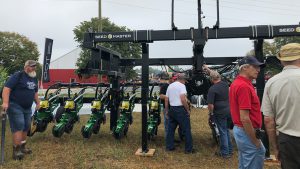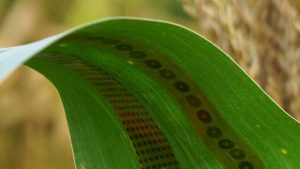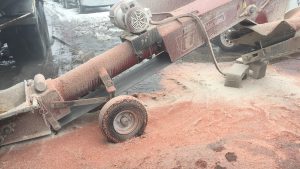Growing eastern Ontario research
WINCHESTER AGRICULTURAL RESEARCH STATION
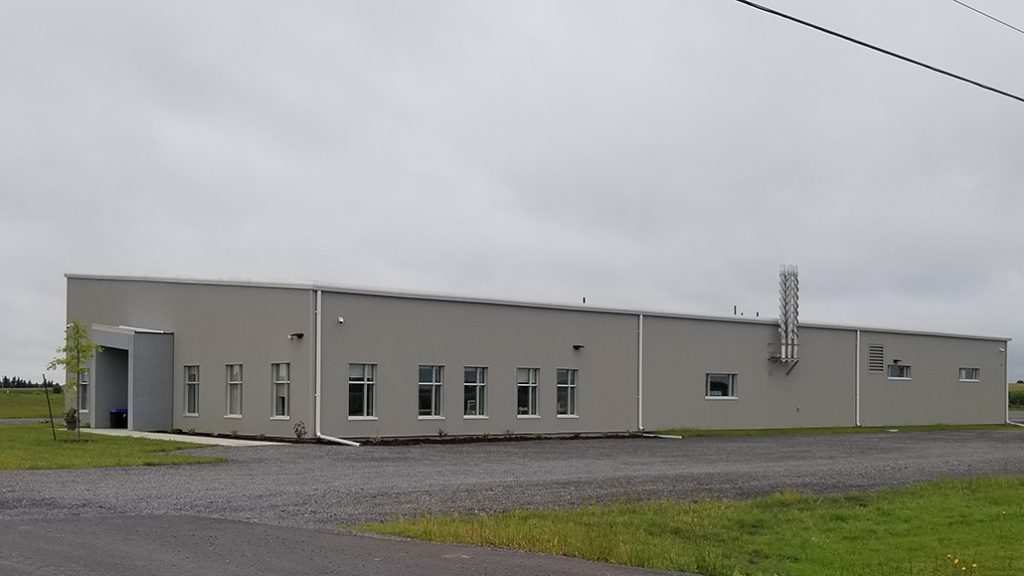
AFTER THE UNIVERSITY of Guelph closed its campus in Kemptville in 2016, the future of the plots at the Winchester Agricultural Research Station was called into question. The research statin relied on the campus to analyze its test plot samples.
However, with a brand new building just finished in June, the site is now a standalone research facility supporting more efficient research of a much broader scope, to the benefit of farmers in the region.
The new 5,210-ft2 facility is owned by the provincial government (through the Agricultural Research Institute of Ontario) and managed by the University of Guelph through the Ontario Agri-Food Innovation Alliance. Along with other buildings and 150 acres of field plots (on clay loam, which is the soil type found on about a million acres in the region), the Winchester station is well-equipped to support research that directly benefits eastern Ontario crop producers.
“One of the questions addressed this year was yield and quality of forage when cut at several growth stages in a year when there has been a lot of alfalfa winterkill,” says Holly Byker, staff manager, who is one of three full-time staff to work at the facility.
Byker notes they have also begun a project that looks at 12 different cover crop options in strip till, bio-strip, and no-till scenarios following wheat and going into a corn and soybean crop rotation. Another project is looking at whether there is a response when sulfur is added to spring wheat, barley, oats, dry beans, soybean, or corn. The research team also has a crop rotation trial looking at winter wheat survival following the harvest of canola, dry beans, and three different maturities of soybeans.
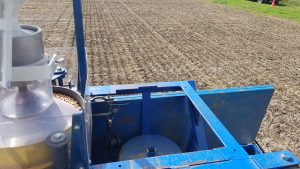
There are also yearly crop performance (yield and quality) trials through the Ontario crop committees, and the research plots of the Ontario Ministry of Agriculture, Food & Rural Affairs (OMAFRA) specialists used for the Eastern Ontario Crop Diagnostic Day.
In addition, this spring Dr. Josh Nasielski started his research program at the Winchester, New Liskeard, and Emo Agricultural Research Stations relating to his University of Guelph faculty position ‘Cropping Systems in the North and East of Ontario’.
“We also had eight or so other University of Guelph researchers as well as some from Agriculture and Agri-Food Canada and private industry who each ran at least one research trial directly linked to their programs here,” Byker explains. “I expect this will grow in 2020.”
PLANNING AND USE
The layout and plans for the building were completed over the course of nearly a year before construction began in early 2018. Byker and her colleagues toured other local research facilities to ask about uses for current space, priorities, likes, and dislikes. The construction firm also went through their research processes with them and proposed an initial building layout. Changes were requested as Byker and the others thought through what would be best for each room, with budget and square footage in mind.
One thing that was important was flexibility. Areas of the building can be set up, and other areas can be converted, to allow for group use.
“Already this year, because the Dundas Soil and Crop Improvement Association hosted a Compaction Day down the road in August, in March they had an initial planning meeting here,” Byker explains. “We helped plant some of the crops and cover crops for demonstration for that day and helped as needed. The Association held a director’s meeting here. The Grenville 4H group also came to tour the facility and the research plots, and we’ve held a couple of presentations on precision planting and the use of drones and other technology in agriculture.”
The new facility has greatly increased the station’s efficiency in Byker’s view, and has allowed her and others to concentrate more on getting research done rather than spending a significant amount of time moving equipment and staff between the station’s previous office in Kemptville and the research plot site at Winchester.
“It’s also allowed us to adjust our plans throughout the day more easily based on weather and the arrival of seed for the various trials,” she says. “This investment has honestly been phenomenal and it’s a huge difference in comparison to the previous three years I have been here. The building ties in with the upgrades in equipment to enable research of very broad scope for the various crops and cropping systems for the area.”
“Having the seed lab and equipment storage on site has also allowed us to streamline all of our operations,” she adds. “We’ve really enjoyed our first season in the new building and look forward to many more.”
NEW FACILITY IN NEW LISKEARD
A new field crops research facility is being built at the New Liskeard Agricultural Research Station. Remo Pallottini, University of Guelph director of research facilities management, says it is part of the commitment of the Agricultural Research Institute of Ontario and the Ontario Ministry of Agriculture, Food and Rural Affairs to invest in the long-term sustainability of crop research in northern and eastern Ontario.
The new building, which will be similar to that of Winchester Station’s, will consolidate research activities. Currently, all of the research plots are on one part of the station and all of the support buildings are across a busy four-lane road on another part. “It is becoming increasingly problematic to move people and equipment back and forth,” notes Pallottini. “The new facility will also include better work and storage space to better handle and protect research samples, and new processing areas that better match current research processes — for example, proper fume hoods, clean spaces where analysis equipment can be used and protected.”
There will also be change rooms, meeting space, and offices, as well as workshop space with proper ventilation. •









